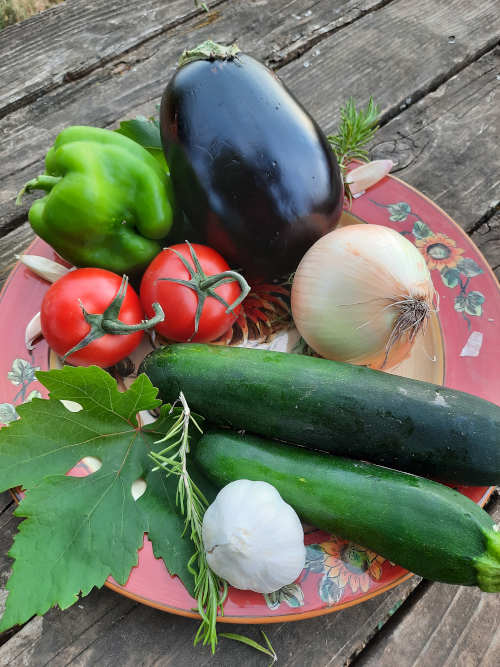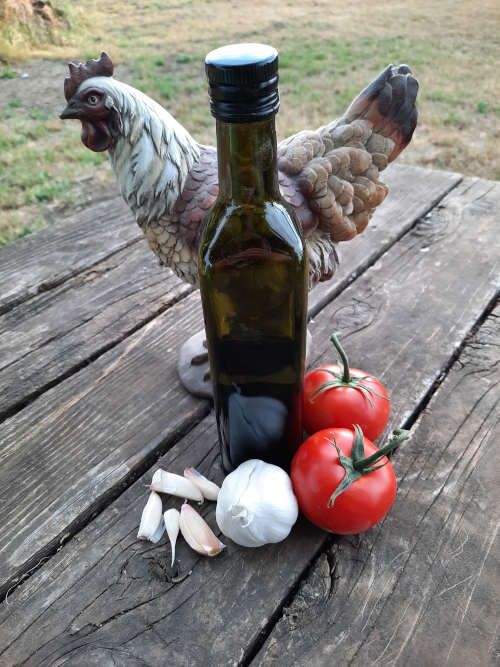
Provence, a region in southern France, burst onto the radar screens of many Americans thanks to “A Year in Provence,” a 1989 bestseller by Peter Mayle.
Mayle and his wife, then 50-somethings from Britain, moved into a 200-year-old farmhouse in the Lubéron to experience rural life in the French style.
The result is a series of essays that whimsically portray life in a French village where the tempo is governed by the seasons of the Rhône Valley.
In addition to rural villages and swaths of countryside planted with lavender (the likes of which are painted by artists such as Cezanne), Provence includes the Côte D’Azur, also known as the French Riviera, and its cities, the most famous of which include Nice, Cannes, and Saint-Tropez.
The French Alps form the eastern border of Provence, and the Pyrenees are along its western edge.
The people of Provence speak with a strong regional dialect. The traditional language of the region is Provençal, a language of southern Europe that’s closer to Spanish and Catalan than the French spoken in Paris.
In the eastern part of the region, towards Nice and the Italian border, local dialects and culture mirror Italy more than they do the rest of France.
Long before the first Republic of France was formed in 1792, Greeks from the ancient city of Phocaea established a port city on the Mediterranean in 600 B.C., which they named Massilia. That city is now known as Marseilles (which happens to be the original home of bouillabaisse, a classic seafood stew made famous in the region).
What is now Provence was eventually ruled by the Romans, who claimed the area in southern France between the Alps and the Pyrenees as the first Roman province west of the Alps.
Their common monikers for the region were Provincia Nostra (meaning our province), Provincia Romana, or just plain Provincia. This eventually became La Provence, as it’s now known in today’s modern French.
Well preserved classical remains of Roman culture can be seen throughout the region, particularly in the Rhône Valley, such as the intact amphitheater in Arles still in use today.
Going back further, the coast of Provence has some of the earliest known sites of human habitation in Europe, with primitive stone tools dating back to well over a million years ago discovered there.
Olive trees, dry rocky coastline studded with stunted pines, vineyards, and villages are emblematic of large stretches of the Mediterranean coastline in Provence, similar to what’s found in other countries along this sea.
Other things found in Provence (some of which may surprise you) are bull fighting, flamingos, French cowboys, salt flats tinted from pastel pink to fuchsia, and the Verdon Gorges, Europe’s smaller but still spectacular version of the Grand Canyon.
It’s said that the light is special in Provence. Since the 19th century, renowned artists like Picasso, Matisse and Chagall have chosen to live and paint there because of it. Van Gogh painted Starry Night over the Rhône River in Provence.
Like much of the Mediterranean region, Provence is home to fields of wine grapes and is especially known for its rosé varieties. While wine is beloved there, pastis, a liqueur flavored with anise, is considered the traditional drink of Provence.
The region has a mild climate (like California, Provence is home to warm, dry summers and cool, wet winters), and this allows for the enjoyment of fresh meats, fish, fruits and vegetables throughout the year.
The cuisine is also influenced by other culinary cultures along the Mediterranean Sea, particularly Italy and, to a lesser degree, Spain.
This isn’t surprising, considering that the three pillars of Provençal cuisine, which are olive oil, tomatoes and garlic, are woven into the dishes of the region. When food is said to be served “a la Provençale,” meaning in the style of Provence, it typically indicates that these three food pillars are components of the dishes presented.
The city of Nice was initially part of Italy, and when it became part of France in 1860, other Italian favorites were incorporated into Provençal cuisine, such as polenta, fresh pasta, and pistou, which is the Provençal version of pesto.

As an example of Italian influence, soupe au pistou is similar to minestrone, full of vegetables, legumes, pasta, tomatoes and herbs, and finished with pistou.
The traditional French version of pistou sauce has just four ingredients - basil, garlic, olive oil, and salt – and is made with mortar and pestle. More modern versions may include Parmesan cheese.
As you may have guessed, the biggest difference between pistou and pesto is that pesto contains pine nuts.
Interestingly, pistou is not a modern French word; rather, it’s from Occitan, a French dialect, and means “pounded,” a reference to its traditional preparation.
The olive oil that’s prevalent in foods such as pistou was introduced to the region when the Greeks established the ancient version of Marseilles in 600 B.C.
With the Mediterranean coastline on its southern border, Provence has a seafood-dense cuisine. In addition to all kinds of local fish, shellfish such as shrimp, mussels, clams, and langoustines (spiny lobsters) are eaten in abundance.
Bouillabaisse, a seafood stew in a saffron-infused tomato broth, is comprised of these gifts of the sea. Traditionally made with at least three types of Mediterranean-caught fish in addition to the shellfish, it’s often served with baguette slices spread with aioli, another Provençal specialty.
Ground anchovies flavor sauces and salad dressings, and tuna, sardines and mullet are popular main courses.
Other traditional proteins include rabbit, veal and escargot.
In addition to the three pillars, foods are enhanced with fresh herbs like parsley, oregano, fennel, basil and rosemary. Other flavorful ingredients include Niçoise olives, capers, shallots and leeks.
Nutmeg, mace, almonds and lemons flavor desserts, and saffron is used in stews, sauces, and egg dishes like omelets and quiches.
Peppers, mushrooms, artichokes, potatoes, beans, Swiss chard, and squashes are common vegetables used in cuisine, and fruits and nuts include citrus, melons, apricots, peaches, cherries, quinces, figs, pine nuts, and hazelnuts.
Other local ingredients often incorporated in cuisine are chickpeas, lentils, goat cheese and truffles.
Ratatouille is a classic Provençal stew made from a variety of vegetables – eggplant, tomatoes, zucchini, bell peppers, onions and garlic – all cooked in olive oil.
What makes ratatouille truly special is that each vegetable is cooked separately to preserve the integrity of its flavor and texture, then combined. The traditional method is to use a sauté pan; however, the vegetables can also be roasted. Some recipes call for layering the vegetables for a one-pan bake.
Salad niçoise originated in Nice and is a layered entrée with crisp greens, tomatoes, boiled potatoes, haricots vert (small, tender green beans) dressed with a vinaigrette dressing and topped with hard-boiled eggs and a seared tuna steak.
Other Provençal specialties include aioli, an egg-based emulsion flavored with garlic and olive oil, and tapenade, a spread made with olives and olive oil, often flavored with anchovies.
“Herbes de Provence” refers to marketed blends of herbs used in Provençal cooking and can contain any combination of thyme, rosemary, marjoram, chervil, fennel, oregano, basil, tarragon, lovage, savory, sage, and bay leaf.
The term gained attention in the 1960s through a Julia Child recipe published in “Mastering the Art of French Cooking.” Poulet Sauté aux Herbes de Provence (Sauteed Chicken with Provence Herbs in English) used just three Provençal herbs: a teaspoon of thyme or savory, a teaspoon of basil and a quarter teaspoon of ground fennel.
A trend was born, and in the 1970s French companies began bottling their versions of herb blends representing Provençal flavors. Most have quite a few more herbs than Julia Child’s more edited offering.
Some say lavender is the soul of Provence; however, these blends typically don’t include it unless marketed in North America. In Provence lavender is used in cuisine but in sweet offerings like ice cream, crème brûlée, and infused teas and honeys.
Today’s recipe is a white bean stew in the style of Provence which can be made with dry or canned beans. And though I’ve offered it in the past, also included is my olive tapenade recipe (sans anchovies). Enjoy!

White Beans Provençal
1 16-ounce bag dried Great Northern beans
1 ½ quarts vegetable or chicken stock, homemade, or commercial packaged broth
1 tablespoon kosher salt
¼ cup extra virgin olive oil
2 yellow onions, chopped
2 – 3 carrots, diced
2 large stalks celery, strings removed and diced
1 14.5-ounce can diced tomatoes, drained
3 – 4 garlic cloves, minced
¼ cups chopped fresh flat-leaf parsley, chopped, plus extra for garnish
¼ cup chopped celery leaves (optional)
2 tablespoons minced fresh rosemary
2 tablespoons minced fresh thyme
2 – 3 lemon wedges (optional)
Freshly grated Parmesan cheese for garnish
Soak beans overnight in a bowl with water to generously cover the beans.
Drain the beans and place in a large pot with the stock and bring to a boil. Lower the heat and simmer for 30 to 40 minutes, until the beans are tender (but not mushy). Add 1 tablespoon of kosher salt during the last 10 minutes of cooking.
Drain beans, reserving the stock they were cooked in.
In a large skillet, heat the olive oil and add the onions, carrots, and celery. Cook over low heat for 10 to 15 minutes until tender.
Add the parsley, celery leaves (if using), garlic, rosemary, and thyme and cook for another 1 – 2 minutes, stirring frequently.
Add the beans, tomatoes, and 1 cup of the cooking stock. Cook for 15 minutes, until the stock creates a sauce. Add more stock as needed.
Taste and add a squeeze or two of lemon as needed to balance the flavor.
Serve garnished with the freshly grated Parmesan cheese and extra chopped parsley.
Serve with baguette slices if desired.
Note: This can be made with canned white beans instead of dried beans for a quicker preparation.
Tapenade
1 cup high-quality black and green olives, any combination
1 tablespoon capers
2 cloves garlic, minced
2 tablespoons extra virgin olive oil
1 teaspoon lemon juice
Freshly ground black pepper, to taste
Coarsely chop olives in food processor fitted with steel blade; add remaining ingredients and pulse to combine. Be careful not to over-process, as tapenade should not be smooth.
If stored in tightly covered container, tapenade should keep for up to a month in the fridge. Add some extra virgin olive oil to moisten when needed before serving.
Tapenade can be serviced with crackers or baguette slices spread. For a treat, spread crackers or baguette slices with a mild goat cheese first.
Esther Oertel is a writer and passionate home cook from a family of chefs. She grew up in a restaurant, where she began creating recipes from a young age. She’s taught culinary classes in a variety of venues in Lake County and previously wrote “The Veggie Girl” column for Lake County News. Most recently she’s taught culinary classes at Sur La Table in Santa Rosa. She lives in Middletown, California.

 How to resolve AdBlock issue?
How to resolve AdBlock issue? 



